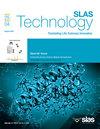Construction and validation of a nomogram model for predicting rebleeding in high-risk peptic ulcer bleeding patients based on lasso regression: A single center retrospective research
IF 3.7
4区 医学
Q3 BIOCHEMICAL RESEARCH METHODS
引用次数: 0
Abstract
Objective To construct a Nomogram prediction model for high-risk Peptic Ulcer Bleeding (PUB) rebleeding using Lasso regression analysis and verify its predictive performance.
Methods Retrospective research was performed on 279 cases with PUB admitted from January 2020 to December 2023 in a hospital's medical record information system. Clinical data were collected and randomly separated into a modeling group and a validation group in a 7:3. The overfitting in the constructed model was verified by comparing the clinical data. According to the clinical data of the modeling group, Lasso regression analysis was used to screen variables and conduct multiple factor analysis. A Nomogram model was constructed accordingly, and its predictive performance was validated.
Results Among 279 patients included in this study, 45 cases had rebleeding, with an incidence rate of 16.13 %. The Lasso regression analysis demonstrated that a total of 15 variables were screened, taking λmin as the standard. Multivariate analysis showed that diastolic blood pressure, hematocrit, blood transfusion volume, GBS score, endoscopic examination, and mechanical hemostasis were all independent risk factors for rebleeding in PUB cases. The Nomogram model based on multiple factor analysis demonstrated that the AUC of the modeling group and the validation group were 0.832 (95 %CI = 0.744-0.921) and 0.814 (95 %CI = 0.672-0.956), and Hosmer-Lemeshow χ2 = 13.520 (P = 0.095). The DCA and CIC curve analysis results showed that using this model for patient intervention achieved positive benefits and relatively accurately predicted the rebleeding in PUB patients.
Conclusion This research constructs a Nomogram model based on Lasso regression analysis that can effectively predict the rebleeding in PUB patients, providing reference for early prevention of clinical PUB rebleeding.
基于Lasso回归的预测消化性溃疡高危出血患者再出血的Nomogram模型的构建与验证:一项单中心回顾性研究
目的:应用Lasso回归分析构建高风险消化性溃疡出血(PUB)再出血的Nomogram预测模型,并验证其预测效果。方法:对某医院病案信息系统中2020年1月至2023年12月收治的279例PUB患者进行回顾性研究。收集临床资料,按7:3的比例随机分为建模组和验证组。通过对比临床数据,验证了所构建模型的过拟合性。根据造模组临床资料,采用Lasso回归分析筛选变量,进行多因素分析。据此构建了Nomogram模型,并对其预测性能进行了验证。结果:279例患者中,再出血45例,发生率为16.13%。Lasso回归分析表明,以λmin为标准,共筛选出15个变量。多因素分析显示,舒张压、血细胞比容、输血量、GBS评分、内镜检查、机械止血均是PUB患者再出血的独立危险因素。基于多因素分析的Nomogram模型显示,建模组和验证组的AUC分别为0.832 (95%CI=0.744 ~ 0.921)和0.814 (95%CI=0.672 ~ 0.956), Hosmer-Lemeshow χ2=13.520 (P=0.095)。DCA和CIC曲线分析结果表明,使用该模型对患者进行干预取得了积极的效果,并且相对准确地预测了PUB患者的再出血情况。结论:本研究构建了基于Lasso回归分析的Nomogram模型,能够有效预测PUB患者再出血,为临床PUB再出血的早期预防提供参考。
本文章由计算机程序翻译,如有差异,请以英文原文为准。
求助全文
约1分钟内获得全文
求助全文
来源期刊

SLAS Technology
Computer Science-Computer Science Applications
CiteScore
6.30
自引率
7.40%
发文量
47
审稿时长
106 days
期刊介绍:
SLAS Technology emphasizes scientific and technical advances that enable and improve life sciences research and development; drug-delivery; diagnostics; biomedical and molecular imaging; and personalized and precision medicine. This includes high-throughput and other laboratory automation technologies; micro/nanotechnologies; analytical, separation and quantitative techniques; synthetic chemistry and biology; informatics (data analysis, statistics, bio, genomic and chemoinformatics); and more.
 求助内容:
求助内容: 应助结果提醒方式:
应助结果提醒方式:


